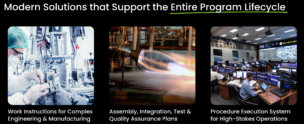Radian Aerospace has set out to build the world’s first single-stage-to-orbit (SSTO) spaceplane, the Radian One.
The company is designing the fully reusable spacecraft to be not just a spaceplane but also a multifunctional platform, capable of performing a broad array of missions in space, many of them not possible with vertical launch systems.
Capable of launching from a proprietary rocket-powered sled, ascending to orbit, and returning to Earth without jettisoning any stages, the Radian One is engineered for rapid, on-demand operations, featuring a short turnaround time between flights with minimal inspection required.
Search for the holy grail: Though technical challenges remain, the successful development of their next-generation spaceplane could unlock transformative business opportunities in LEO by drastically reducing the cost of routine space access and human spaceflight missions—a key requirement for the sustained commercialization and industrialization of LEO.
Often hailed as the holy grail of space travel, the SSTO vehicle has the potential to revolutionize the industry, reshaping how we access and operate in space.
Since closing a $32M seed round in late 2021, the Seattle-based company has been engineering and advancing their spaceplane hardware. They have made progress in design and testing, steadily moving their innovative technology and the spaceplane toward operational readiness.
Company Overview
- How it works: As seen in the picture above, Radian employs a rocket-powered sled system during takeoff to accelerate their spaceplane along a 10,000-foot track.
- To gain additional momentum to reach orbit, the spaceplane ignites its engines while the sled replenishes its fuel tanks, ensuring the vehicle is filled to the brim with propellant for takeoff.
- After zipping down the 2-mile track, the sled releases the spaceplane at Mach 0.7, propelling the vehicle into the next phase of its ascent.
- At its core, the launching system is designed to offload a portion of the acceleration burden from the spaceplane to the ground, thereby reducing the amount of propellant the vehicle needs to carry for flight. Unlike traditional vertical rockets, which burn vast amounts of fuel at the launch pad to overcome their own inertial weight, this approach conserves fuel by leveraging the sled system to help achieve the necessary speed to reach orbit.
- Up and downmass: The spaceplane wings lend a hand during ascent by providing extra lift and during descent by gliding the vehicle to an aircraft-like horizontal landing. Radian says their SSTO vehicle will be able to transport 2,270 kg of cargo (upmass) and bring back home over 4,540 kg (downmass), making it a versatile tool for missions requiring both delivery and retrieval of payloads.
- Meet the team: The Radian team includes folks with extensive NASA and DoD experience as well as successful serial entrepreneurs, a founding member of Deloitte’s global space practice, and an engineering team that has worked on urban air taxis and signature platform developments such as the B-2, B-21, NGAD, Space Shuttle, and the International Space Station.
- Co-founder and CTO Livingston Holder led Boeing’s X-33 SSTO project.
- While the program was eventually canceled, Livingston is taking lessons learned to Radian, building Radian One with a more cost-effective design, Methalox propellant, and new heat shielding tech.
Compared to traditional rockets: The traditional rockets that we are all used to seeing rely on multiple stages, jettisoning weight as they fly higher and higher. For all rockets not named Falcon 9, those stages are expended, and millions of dollars of hardware are tossed into an oceanic graveyard.
Radian’s SSTO approach is similar to commercial aircraft, where the entire vehicle is reused time and time again. The plane will only require refueling and minimal maintenance between flights. Radian envisions a fleet of spaceplanes capable of launching multiple times per week or even within 24 hours for critical national security needs.
What has been the progress thus far?
Since securing its seed round in 2021, the company has been focusing on advancing the development of the SSTO spaceplane and its modular mission payload system through extensive modeling and simulation including aerodynamics, wind tunnel testing, and a subscale demonstrator. Simultaneously, Radian has been quickly advancing key SSTO systems and enabling technologies, including thermal protection systems (TPS), composite cryogenic tanks, and propulsion systems.
Radian is in the process of developing a proprietary multi-layer TPS that can withstand the ultra-fiery conditions of re-entry. The heat shielding is important for 1) insulating the vehicle’s cryogenic tanks and 2) Radian’s reusability goals.
As for propulsion, Radian chose to go with a not-yet-named third-party vendor to supply Methalox-guzzling engines. The decision derisked an often-complicated process of developing engines in-house.
Radian has completed preliminary wind tunnel tests with the US Air Force Academy, largely validating the vehicle’s aerodynamics. Announced this week, the company has begun testing on its first subscale experimental flight vehicle, with further flight vehicle campaigns planned over the next several years.
The company’s timeline to orbital fight is as follows:
- 2024: Experimental vehicle test campaign begins
- 2025: First rail sled test
- 2028: First flight to space
- 2029: First flight to orbit
Strengths
- 100% fully reusable: Nearly all rocket startups are looking to tackle a problem that SpaceX began solving 10 years ago. However, Radian’s approach is entirely unique. If they are able to nail SSTO flight, it would significantly lower the cost of transporting goods to and from orbit. There is clear and large market demand for such low-cost capability. Radian has over $3B in commercial launch services commitments already.
- Downmass capabilities: Not only would the spaceplane be able to launch at ultra-low costs, but it would also be able to return substantial cargo from orbit, answering the return-to-Earth demands of the emerging in-space manufacturing companies. Crucially, the plane lands horizontally on a runway, improving stability for returning payloads.
- Leadership: Radian’s leadership team comprises ex-Boeing, NASA, Air Force, and commercial industry professionals, providing crucial expertise in navigating the technical challenges of SSTO while remaining focused on economic viability.
Technical Challenges: Below are the technical challenges that Radian faces.
- Proving out SSTO tech: Developing a propulsion system powerful enough to send a single-staged vehicle all the way to orbit has never been done before.
- Mitigant: Radian believes that the sled launch system and the lift generated from the plane’s wings will break that pesky rocket equation. Also, Radian decided to buy, not build, its engines from an established engine supplier with flight heritage, reducing uncertainty of performance metrics.
- Heat shielding: Developing a reliable heat shielding that is lightweight enough for ascent and also durable enough to survive reentry is a difficult engineering problem. Heat shielding for both the Space Shuttle and Orion has been a thorn in NASA’s side.
- Mitigant: Radian has developed a new TPS technology that they believe offers much better protection and reliability than previous systems.
- Sled Development: The ground-based sled accelerator is an unproven approach to launch.
- Mitigant: While the sled development presents unique engineering challenges, the company believes it is a manageable civil engineering problem to solve. Radian is working with top notch rail companies and has plans to build a subscale sled demonstrator in 2025.

Industry Overview
The space industry is currently facing a shortage of launch capacity. There is a need for more efficient and cost-effective launch solutions. The success of SpaceX’s Falcon 9 has demonstrated that reusability can significantly lower costs and increase launch frequency. However, the ultimate prize remains the development of a fully reusable vehicle.
There are only a few launch companies looking to solve this problem. SpaceX is designing Starship to be fully reusable, but Radian offers a unique approach as an SSTO vehicle with the added advantage of runway landings. While Starship prioritizes mass to orbit and deep space exploration, Radian prioritizes mission flexibility. Next-generation launch systems may fundamentally change how, why, and when we can go to space.
Compared to other spaceplanes like Sierra Space’s Dream Chaser (which launches atop a rocket and operates only in space) and Dawn Aerospace’s Mk-II Aurora (which focuses on small suborbital vehicles), Radian’s spaceplane design sets itself apart as a single-stage-to-orbit system that offers lower costs, higher flight cadence, and human spaceflight capability from day one.
In 2022, Deloitte Consulting stated that the inflection point for commercial human spaceflight occurs when per seat prices decrease to $8-11M per seat. While Radian has not publicly stated their price, they have stated that they will be offering seats within this range.




